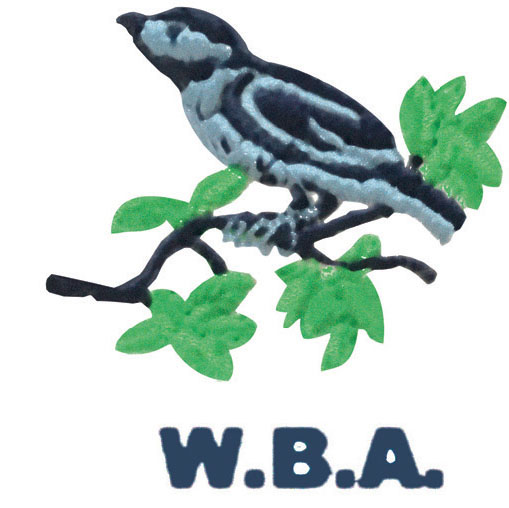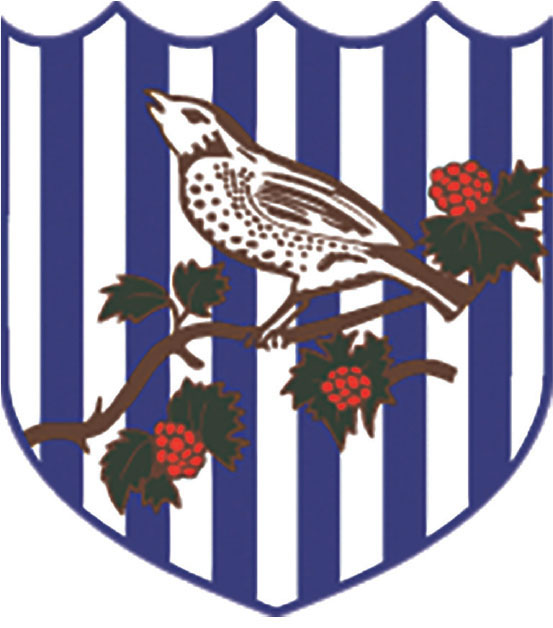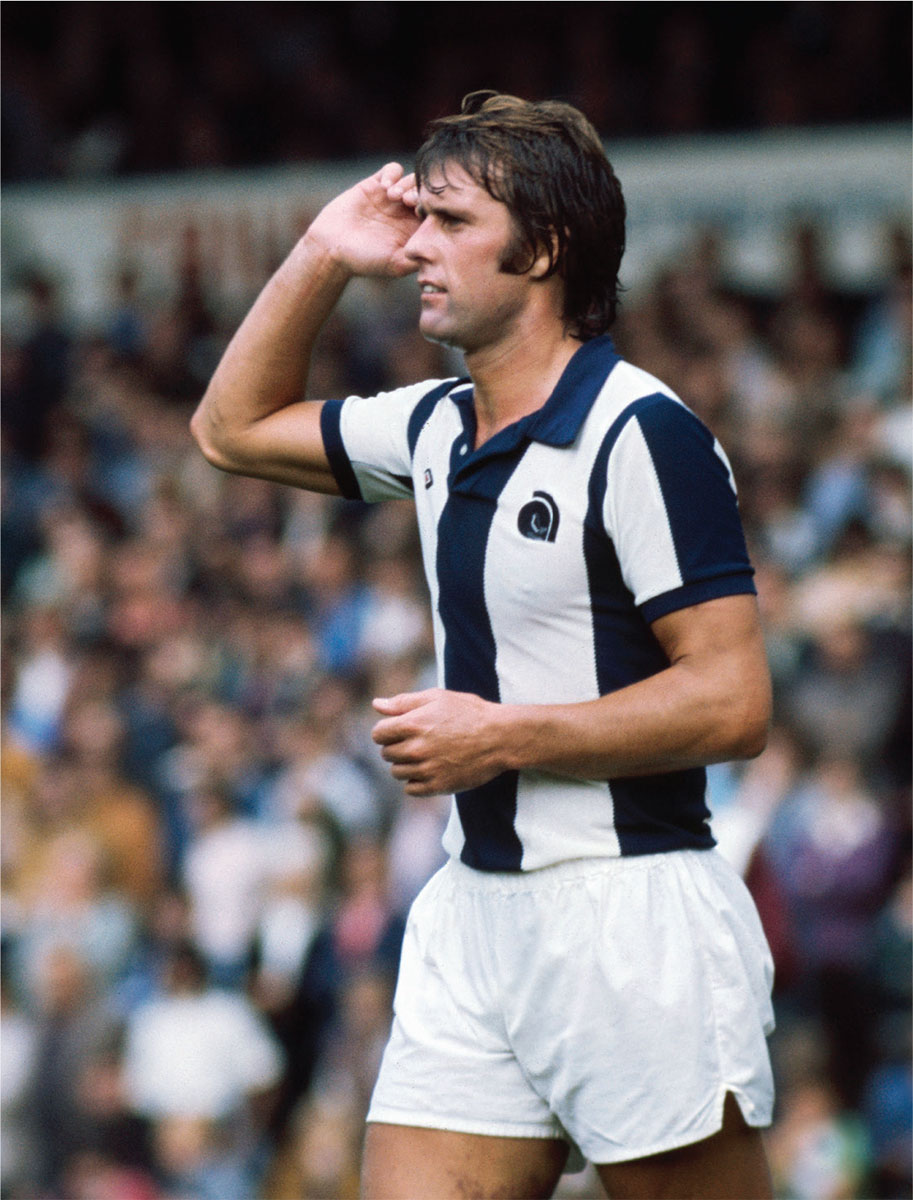
WEST BROMWICH ALBION
THE SONGBIRD OF THE MIDLANDS
As one of the 12 original members of the Football League, West Bromwich Albion are one of the oldest clubs in the United Kingdom. Founded in 1878, the WBA club badge dates back to the late 1880s and depicts a throstle, or song thrush, sitting on a crossbar. The bird has mostly been used ever since, usually on a blue and white striped shield. The crossbar was changed to a hawthorn branch when the club moved to their new ground, the Hawthorns, in 1900.
It is impossible to talk about the history of West Bromwich Albion without mentioning three great black players of the late 1970s: Cyrille Regis, Laurie Cunningham and Brendon Batson. Cyrille Regis was a classic centre forward with a striker’s instinct for goal, Laurie Cunningham was the eccentric attacking genius on the left, and Batson an accomplished fullback. Together they mesmerised the crowd, while lifting West Brom to previously unknown heights: the club finished in the top half of the League throughout the 1970s. The high point came on 30 December, 1978, at Old Trafford, when West Brom, led by Regis, Cunningham and Batson, beat the mighty Man Utd 5-3 in what came to be known as ‘the best match ever played’.
CLUB: West Bromwich Albion FC
NICKNAMES: The Baggies, The Throstles and Albion
FOUNDED: 1878
STADIUM: The Hawthorns, West Bromwich (26,688 capacity)
HISTORIC PLAYERS: Ronnie Allen, Tony Brown, Bryan Robson, Cyrille Regis, Brendon Batson and Laurie Cunningham

1968–1972 and 1986–1994. It was in the late 1880s that the then club secretary Tom Smith suggested a thrush as the club’s official emblem, the reason being that just such a songbird had made its home in the players’ changing room. But it wasn’t until the FA Cup final of 1968 that the thrush was seen on the players’ jerseys for the first time, replacing the city crest which had appeared in previous finals. In the early 1970s, the club crest was redesigned to represent a caged songbird. The emblem had a double meaning, the bird’s cage also representing an A for Albion.

1975–1986. After three years with the caged bird as their symbol, a simplified logo was introduced, consisting only of the club’s initials – a fashion that was prevalent at the time. This emblem lasted for 11 years until the thrush made an enthusiastically received comeback on the team jerseys.

2000–2006. Between 1994 and 2000, the WBA players were once more wearing the city crest on their shirts, but this was changed at the turn of the millennium when this emblem was introduced. Again the bird was perched on its hawthorn branch, but this time against the blue and white shield. The stripes of the shield represent the team’s kit, while the branch has its origin in the home stadium, The Hawthorns, where the club had moved in 1900.

2006–present. An updated version of the club crest began to be used in 2006, when the club were playing in the Championship. The branch has been replaced by a few leaves and berries and the club’s full name was spelled out for the first time ever.

The shortlived but modern-looking club crest from 1975 as worn by Geoff Hurst. The bird’s cage was styled to represent the a of Albion. The emblem appeared most often in navy blue as shown here.